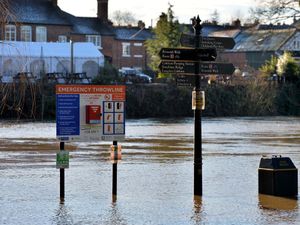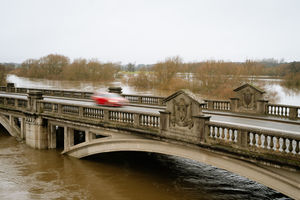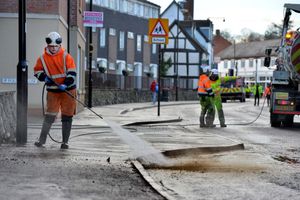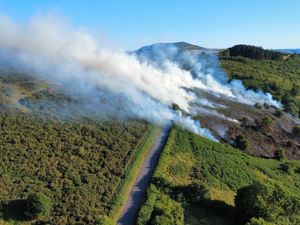'Significant improvements' needed to keep Shropshire safe from flooding
A review of the response to major flooding in Shropshire says "significant improvements" are needed to protect areas like Shrewsbury and Ironbridge.

The details are confirmed in a report to be considered by Shropshire Council's Communities Overview Committee tomorrow, looking at the progress on recommendations made in the wake of the devastating flooding of February and March 2020.
The county was hit by its biggest floods in 20 years in 2020, with Ironbridge, Bridgnorth, Shrewsbury and surrounding villages such as Melverley all affected.
Around 300 homes and businesses were hit during the flooding, according to the council – although it says the true total was likely far higher.
That was followed at the start of this year when Storm Christoph led to more major flooding in Shrewsbury, as well a number of surrounding villages, with some completely cut off from assistance.
A report, from Steve Smith, Shropshire Council's Assistant Director of Infrastructure, says that a review has found more needs to be done to ensure an increase of resources in the event of major flooding – as well as improvements to lines of communication.
The paper says "a significant amount of work" has taken place since the council's own scrutiny report, which raised questions about the 2020 response, but warns that "further significant progress" is "limited by staffing resources and current budgets".


The report also details how a flood gauge 'erroneously' provided high readings leading to "panic in the general public," and "unprecedented demand on Shropshire Council for sandbags alongside significant increasing assistance".
The efforts of staff in trying to respond to flooding have been praised in the report but it says more needs to be done.
It says: "This review into the current arrangements has identified that whilst council departments and officers do their upmost to respond effectively during events, there are significant improvements required around lines of communication and how available resources can be swiftly increased during a severe weather or flooding event. "
It adds that consultants WSP have been commissioned to produce a draft 'Severe Weather Plan' for the authority which will suggest areas for improvement.
But it warns that extra funding will be needed.
The report states: "Following the recommendations of the scrutiny report a significant amount of work has been undertaken by Shropshire Council.
"Further significant progress is however limited by staffing resources and current budgets. As such investment across several service areas would be required to ensure Shropshire Council could even more effectively prepare for and respond to future flood events."
One of the measures being drawn up are 'Community Flood Action Plans' which will set out what is needed for each community to cope with flooding, and what they can do to prepare for them.

The report also highlights a number of drivers who ignored closure signs – putting themselves and potential rescuers at risk, and also causing extra damage to properties by creating 'bow waves' as they drove past.
It says that it will be looking at placing more officials at closure notices to stop people driving through them.
The report says: "It is acknowledged however, that in the past drivers have ignored unmanned closures and that greater manned presence is needed to reinforce the dangers that such actions can have, not just to drivers but also potential rescuers, should the driver get in to trouble in flood waters."
The report also highlights the difficulties caused by the faulty gauge reading, saying it led to significant demand on council resources.
It states: "During both the 2020 and the 2021 events the Environment Agency’s gauge at Crew Green erroneously provided predictions of 11.35m, with the previous highest record being 6.57m. Crew Green gauge sits at the confluence of the Rivers Severn and Vyrnwy and is therefore a strategic asset, which impacts on readings on a large number of EA gauges further downstream.
"This prediction of a flood depth 4.78m higher than the previous record resulted in panic in the general public.
"The result of which was unprecedented demand on Shropshire Council for sandbags alongside significant increasing assistance.
"The impact of these requests and rapidly changing flood predictions from the EA had an enormous resource implication on Shropshire Council during both flood events. The EA have now undertaken works to address this issue and it is hoped that this will not re-occur during future events."
A spokesman for Shropshire Council said: "WSP will be presenting us with a range of recommendations on how our current response to severe weather events can be improved and how our teams and Shropshire residents can be better supported.
"These recommendations will be based on national best practice and tailored to our current and future working arrangements.
"Discussions on how we resource these improvements will be made once the recommendations become available, however it is clear that if we are to deal with the future impacts of climate change we must ensure that our resources and procedures to respond to severe weather are robust and secured for the long term."




